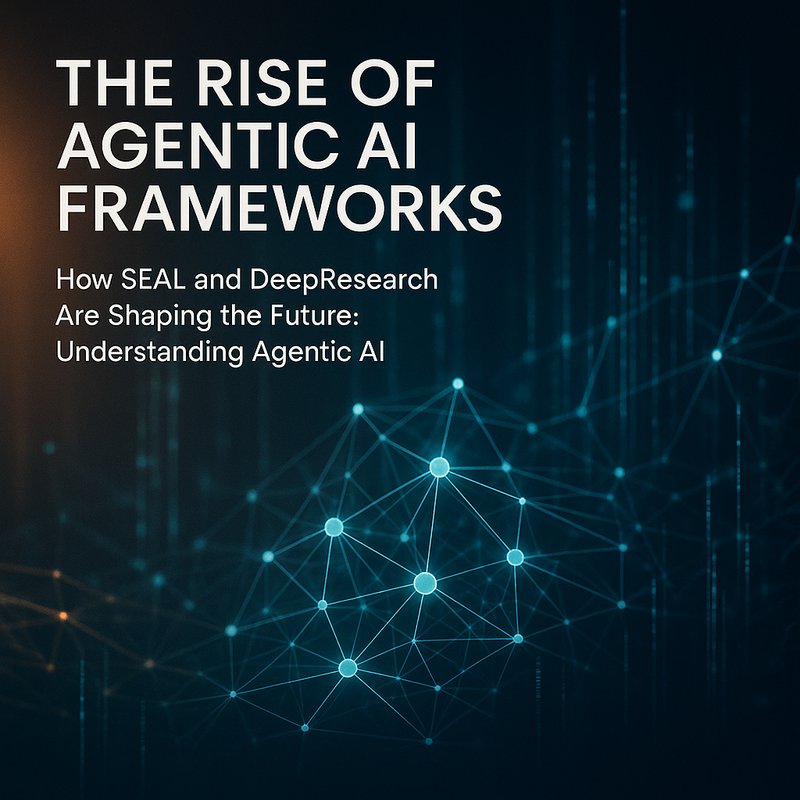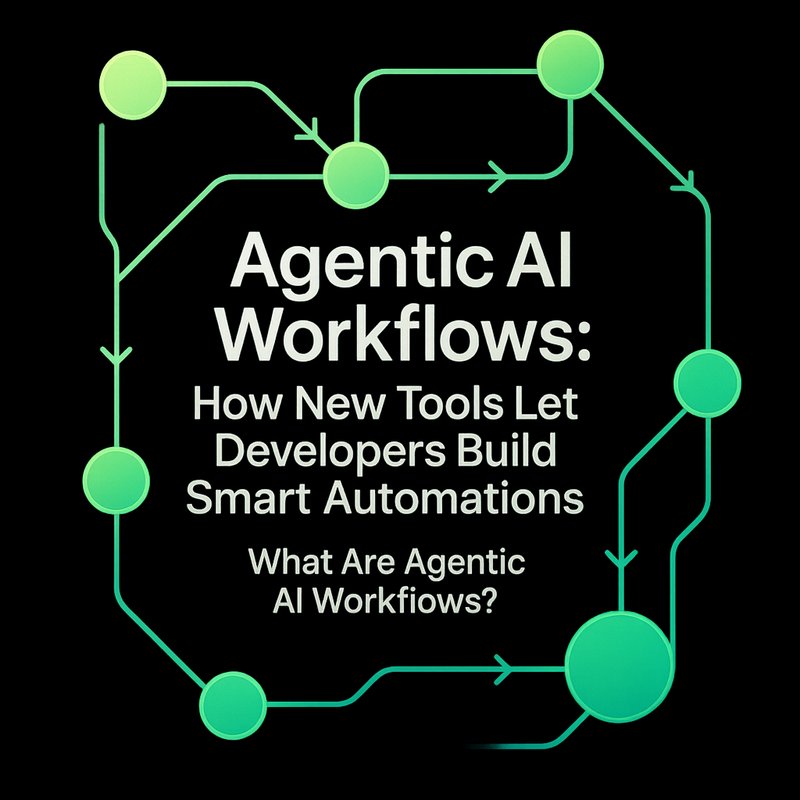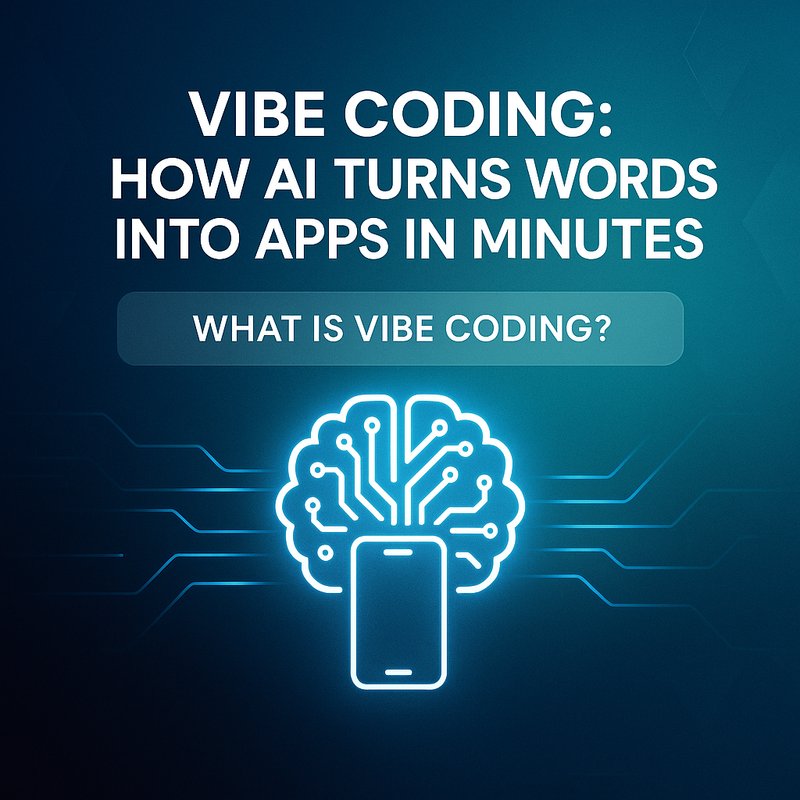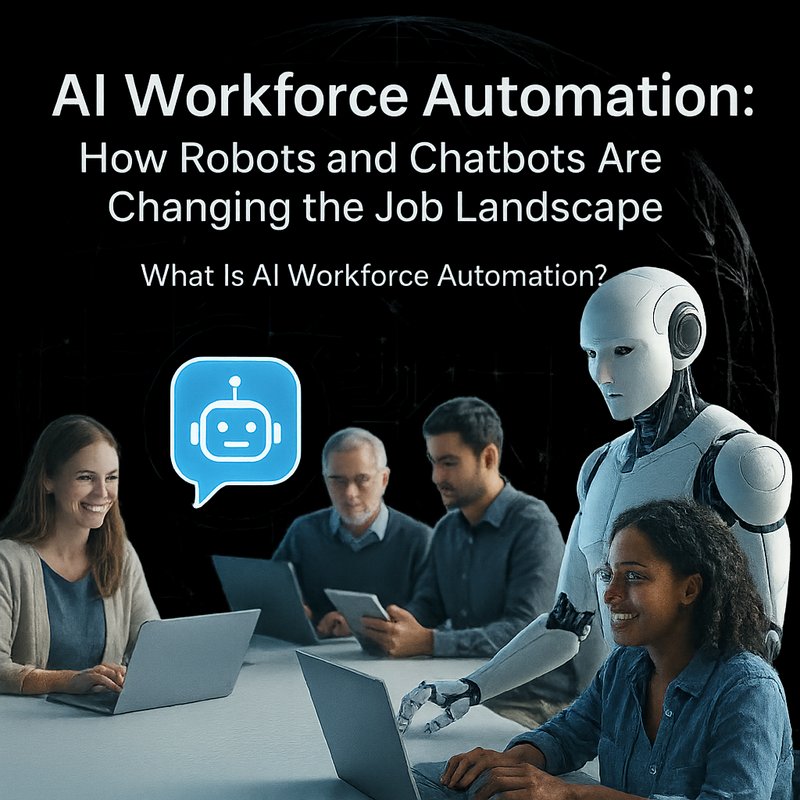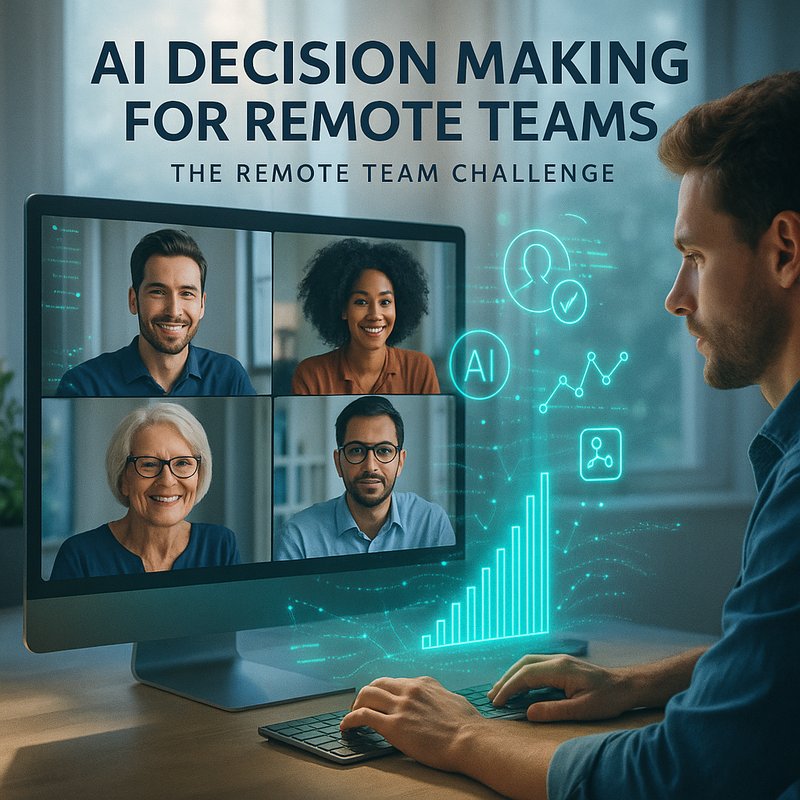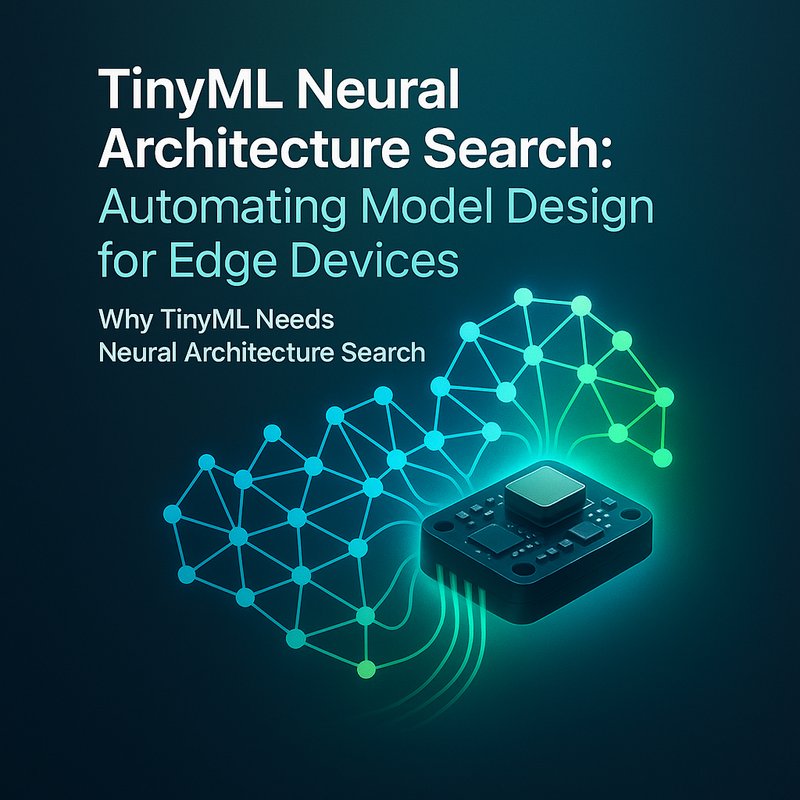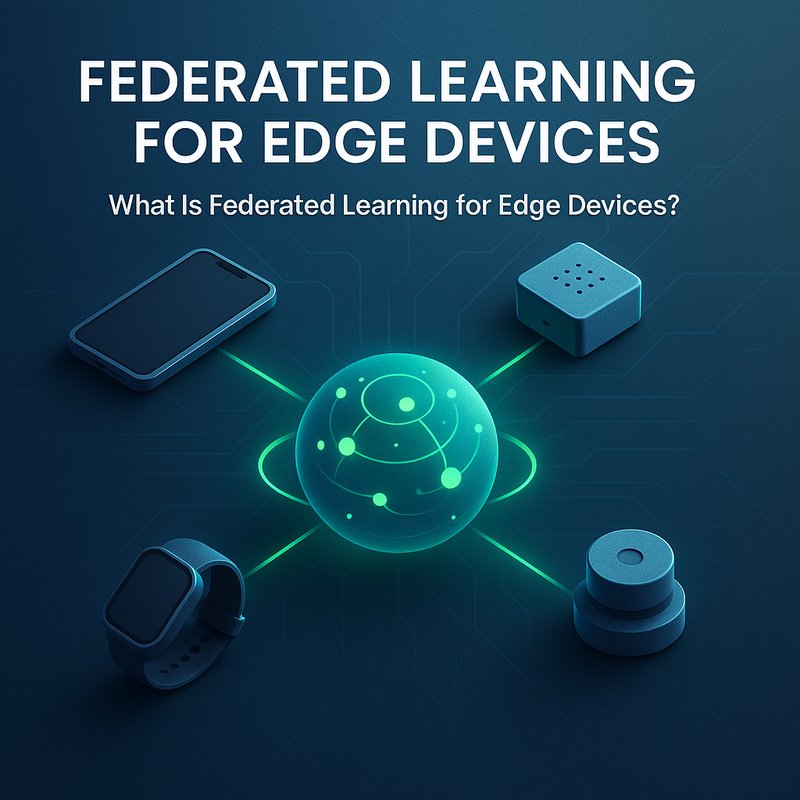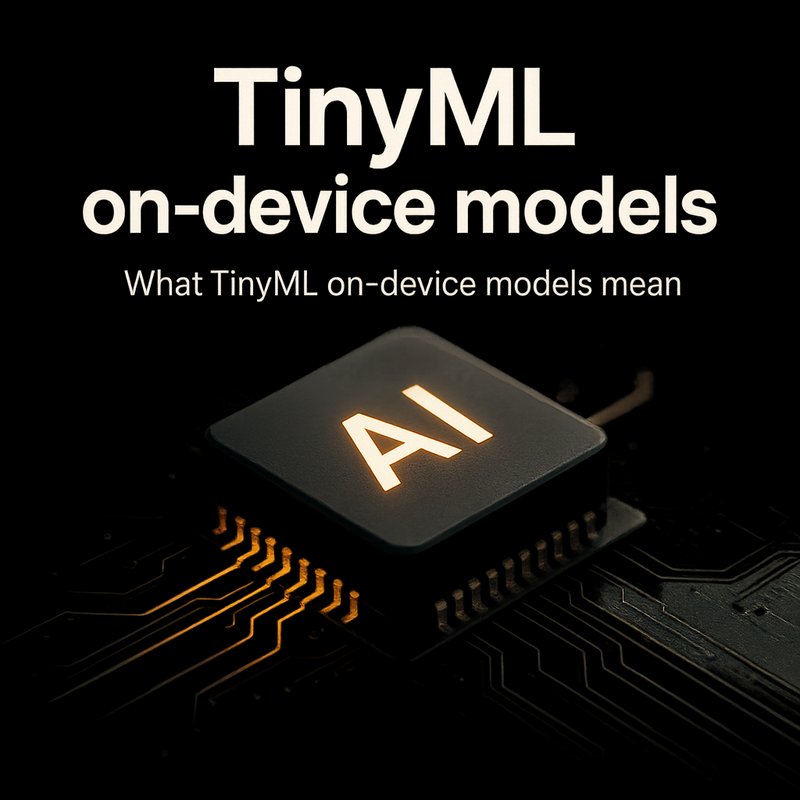Agentic AI is becoming the buzzword of 2025.
People talk about it when they talk about AI that can plan, act, and improve on its own.
In this article we’ll look at what an agentic AI framework really is, why it matters, and how two standout projects – SEAL from MIT and DeepResearch from Hugging Face – are setting the pace for the next wave of intelligent tools.
We’ll also spot new model releases like DeepSeek‑V3, Gemini 2, and Falcon 3, and see how the open‑source ecosystem is growing.
Understanding Agentic AI
What Does “Agentic” Mean?
Agentic AI means an AI that can do more than just answer a question.
It can:
- Ask for more information if it’s unsure.
- Use tools (e.g., a calculator or web browser) to finish a task.
- Learn from its own actions and become better over time.
A normal LLM can give a quick reply, but an agentic AI framework can reason about a problem, plan steps, and pick the right tool to use.
Keyphrase: agentic AI framework – we’ll see how this phrase shows up in the next sections.
How Agentic AI Frameworks Work
An agentic framework usually has three parts:
- Planner – decides what steps to take.
- Tool‑Selector – picks the best tool (e.g., a database, a calculator, a search engine).
- Executor – runs the tools and feeds the results back to the planner.
The planner and executor talk to each other in a loop until the goal is achieved.
Because the planner can “think” about the next step, the whole system becomes agentic.
Why This Matters
- Automation: Tasks that used to need a human to guide an AI can now be done end‑to‑end.
- Safety: By checking each step, the AI can avoid mistakes and be more explainable.
- Versatility: A single framework can run web searches, generate code, analyze documents, and more.
SEAL: MIT’s Self‑Adapting LLM
The Idea Behind SEAL
SEAL stands for Self‑Adapting LLM.
It lets a large language model:
- Generate its own training data (called self‑edits).
- Use a reinforcement‑learning loop to tune its performance.
Think of it like a student who writes essays, receives feedback, and then writes better ones over time.
How SEAL Works
- Self‑Edit Generation – The LLM creates a draft answer and then revises it.
- Feedback Loop – An RL agent evaluates how good the revision is.
- Fine‑Tuning – The LLM updates its weights based on the feedback.
This loop makes SEAL dynamic: it can adapt to new tasks without external retraining.
Real‑World Use Cases
- Customer Support Bots that keep improving their responses.
- Content Generation tools that learn the tone of a brand over weeks.
- Research Assistants that refine their literature reviews automatically.
Keyphrase: agentic AI framework – SEAL is a prime example of a framework that gives the AI agency to improve itself.
DeepResearch: Hugging Face’s Agentic Toolkit
What is DeepResearch?
DeepResearch is an open‑source library that lets developers build agentic AI applications without starting from scratch.
It wraps around the Hugging Face ecosystem and provides:
- A web‑browser tool for pulling up real‑time data.
- A calculator tool for math-heavy tasks.
- A code‑execution sandbox.
- A document‑analysis module.
The library also ships with a Reasoning‑and‑Action (RA) core that can chain these tools.
Key Features
- Modular Tool Integration: Add or remove tools as needed.
- Explainability: Every step the agent takes is logged.
- Community‑Driven: Many contributors add new tools and templates.
How It Stacks Against Competitors
Other agentic frameworks exist, like Microsoft AutoGen and OpenAI Deep Research itself.
DeepResearch’s advantage is its tight coupling with Hugging Face’s model hub and the flexibility to run on edge devices with quantized models.
Keyphrase: agentic AI framework appears again – DeepResearch is another leading framework in the space.
New Model Releases Fueling Agentic AI
DeepSeek‑V3
- Size: 671 B parameters, the largest open‑source model announced in 2025.
- Capabilities: Reasoning, coding, and multi‑modal tasks.
- Integration: Works out of the box with DeepResearch.
Gemini 2 (Google)
- Focus: Multi‑modal, conversational AI.
- Strength: Real‑time browsing and knowledge retrieval.
- Use: Great for building web‑based agentic systems.
Falcon 3 (TII)
- Size: 70 B parameters.
- Optimized: For inference speed on GPU clusters.
- Open‑source: Allows developers to fine‑tune for specific industries.
LLaMA‑Factory & Sim AI

- LLaMA‑Factory: Simplifies fine‑tuning of over 100 LLMs.
- Sim AI: Drag‑and‑drop visual interface to create agents without code.
These models give developers the building blocks needed to create robust agentic AI systems.
The agentic AI framework ecosystem is expanding rapidly thanks to these new models.
Open‑Source Ecosystem: A Community‑Driven Surge
Microsoft AutoGen
- Released a new version in 2025 with enhanced conversation management.
- Helps developers prototype agentic bots faster.
Colossal AI
- Focuses on efficient training of large models.
- Reduces compute cost, making agentic AI more accessible.
Hugging Face DeepResearch
- Continues to grow with new tools like Open Research and Agentic SDK.
- Offers tutorials and example projects for beginners.
Other Notable Projects
- OpenBB Finance – AI-driven finance analytics.
- Photoprism – AI photo management with tagging.
- ColossalAI – Cheap, fast training of LLMs.
The community is vibrant, and each new tool lowers the barrier to entry for building agentic AI.
Practical Guide: Building a Simple Agent with DeepResearch
Below is a step‑by‑step tutorial you can run on a laptop with 16 GB RAM.
It shows how to create an agent that searches the web and summarizes a news article.
# 1. Install the library
!pip install deepresearch
# 2. Import necessary modules
from deepresearch.agent import Agent
from deepresearch.tools import Browser, Summarizer
# 3. Define the agent
agent = Agent(
name="NewsSummarizer",
tools=[Browser(), Summarizer()],
plan="Browse the given URL, extract the main text, and summarize."
)
# 4. Run the agent
result = agent.run("https://example.com/latest-news")
print(result.output)
What Happens Behind the Scenes?
- Planner decides to use Browser → Summarizer.
- Browser fetches the article.
- Summarizer generates a concise recap.
- The result is returned to the user.
You can swap the Summarizer with a Translation tool or add a Calculator for data‑heavy tasks.
The same agent code works with any LLM backend, including DeepSeek‑V3 or Gemini 2.
How Neura AI Fits Into the Agentic Landscape
Neura AI offers a suite of AI‑powered tools that can integrate with agentic frameworks:
- Neura Router: Connects to 500+ models with a single API.
- Neura ACE: Generates content and can embed agentic logic for research.
- Neura TSB: Transcribes audio and can feed transcription into an agent for summarization.
If you want to build an agent that pulls data from internal databases, use Neura’s Keyguard for security checks and Open‑Source AI Chatbot for conversational flows.
The synergy between open‑source agentic frameworks and Neura’s platform can accelerate delivery of intelligent apps.
Looking Ahead: What’s Next for Agentic AI?
1. More Efficient Models
- Quantized versions of DeepSeek‑V3 will drop inference costs.
- Pruned Gemini 2 models will run on edge devices.
2. Better Explainability
- Tool‑level logging will become standard, allowing developers to audit agent actions.
3. Regulatory Compliance
- Agentic AI will need to handle data privacy by design, especially when accessing public web data.
4. Democratized Development
- Drag‑and‑drop tools like Sim AI will let non‑coders build agents.
- Open‑source frameworks will continue to lower the learning curve.
The future of AI will be less about a single model and more about how we orchestrate these models with tools and policies.
Conclusion
Agentic AI frameworks such as SEAL and DeepResearch are reshaping how we build intelligent applications.
They give models the ability to plan, choose tools, and improve themselves, turning static AI into a dynamic partner.
With powerful new models like DeepSeek‑V3, Gemini 2, and Falcon 3, the playground for agentic AI is expanding faster than ever.
Open‑source communities and platforms like Neura AI are making it easier for businesses and hobbyists to jump in and start building.
If you’re curious to experiment, start with DeepResearch and try the simple news summarizer above.
Your next project could be an agent that writes reports, designs UI mockups, or even manages customer support—all without writing a single line of code.
